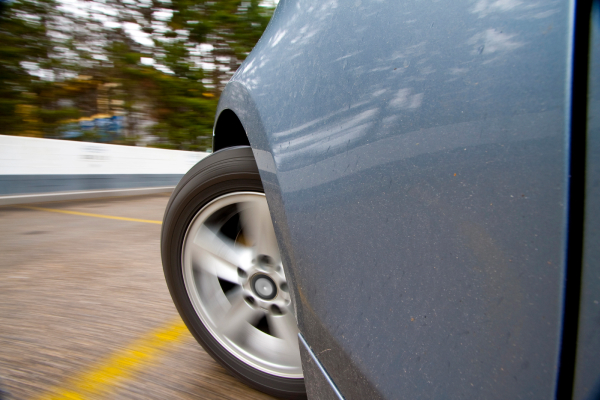
When a car accident happens, one of the first questions is who caused it. Knowing who is responsible is not only about pointing fingers. It decides who pays for medical bills, vehicle damage, and other costs. Fault also affects whether you can file an insurance claim and how much money you may recover.
Cefali & Cefali Personal Injury Lawyers understand that figuring out fault can be confusing and stressful. Insurance adjusters, lawyers, and even the courts can all have a say in how fault is assigned. Our law firm helps drivers and passengers who have suffered injuries by carefully reviewing all the evidence.
Whether the accident occurred at a stop sign, red light, or because of a negligent driver, we work to make sure fault is determined fairly. With the help of an experienced car accident lawyer, you have someone to protect your rights from the start.
Knowing how to determine fault in car accident cases is very important. It affects your insurance coverage, whether an at-fault driver is held legally responsible, and how much money is available for your recovery.
Courts and insurance companies rely on clear facts to assign fault. If fault in an accident is not clear, you may face delays, disputes, or even lose your chance at fair compensation.
If fault in a car crash is proven, it decides who pays for property damage, medical expenses, and even lost wages. The at-fault party or their insurance must pay in most cases.
In many claims, the decision also affects how fast the claims process moves forward. A clear finding of fault can make it easier for your insurance company to release payment.
Courts can use evidence presented to assign blame. If a reasonable person had acted with more care, the at-fault driver may be found responsible. Judges and juries often look at traffic laws, the accident scene, and witness stories when deciding.
In some car accident cases, being found legally responsible means covering both vehicle damage and medical costs.
When insurance companies determine fault, it affects your rates. If you are found responsible, your premiums may rise, even if other drivers were partially responsible. In some states, even one auto accident can cause your insurance to remain high for several years. A personal injury attorney can help reduce unfair blame and protect you from added costs.
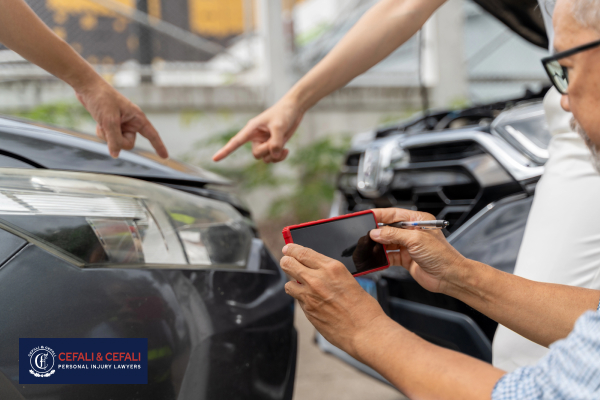
Fault is based on proof. The stronger the proof, the easier it is to determine fault. Police officers, courts, and insurers rely on many forms of physical evidence and records.
A police report is one of the most important records. It shows how the accident happened and includes details from police officers at the crash site. These reports often note traffic citations, like running a red light or ignoring a stop sign. Courts and insurance adjusters often rely on them when trying to determine fault.
Pictures of the accident scene, vehicle damage, and skid marks can clearly show what happened. They also help if a dispute arises later. Images can prove the exact location of the vehicles involved. Security footage from nearby cameras can also strengthen a car accident claim by showing the moments before impact.
Statements from people who saw the crash provide an outside view. Witness statements often support or challenge the stories of the drivers involved. Their account can help the courts determine who caused the accident. Having several witnesses makes it harder for the other driver to unfairly shift blame.
Footage from traffic cameras or security footage can reveal a red light, stop sign, or turning car that caused the crash. These videos provide clear evidence that supports or challenges each driver’s story. They often show the speed limit being broken or a driver failing to use reasonable caution.
Insurance companies and courts determine liability more easily when such a video exists. Having this type of footage makes it harder for an at-fault party to dispute what really happened.
Modern vehicles record speed, braking, and steering. Accident reconstruction specialists use this data to show how the collision occurred and to determine fault. This physical evidence can confirm whether a negligent driver failed to stop safely or ignored traffic citations.
Experts often combine vehicle data with witness statements and police reports for a stronger case. Their analysis can also reveal if multiple drivers were partially responsible under comparative negligence rules.
The rear vehicle is often blamed because the driver’s negligence usually involves not leaving enough space to stop safely. Courts determine that a reasonable person should leave a safe distance when following other cars.
Skid marks, police reports, and witness statements can also help prove fault in an accident. If the rear driver ignored the speed limit or traffic citations, fault determined will usually rest with them.
A turning car is often at fault when it cuts across vehicles involved going straight. Drivers must use reasonable caution before turning left at a red light or stop sign. If a driver turns without looking, courts determine them to be the at-fault party.
In many car accident cases, evidence presented from traffic cameras makes it clear who failed to follow traffic laws.
Running a red light, ignoring a stop sign, or driving over the speed limit are clear signs of fault in an accident. Police officers and traffic citations are often used as strong proof in court. If the accident occurred because a driver broke these rules, they will likely be held legally responsible. Courts determine fault by looking at all the evidence, including security footage or witness statements.
Some states use comparative negligence or modified comparative negligence, where blame can be split. In other places, if you share fault, you may lose the right to recover damages.
Fault in a car accident is judged based on whether the drivers involved acted with reasonable caution. Courts determine fault using medical reports, police reports, and evidence presented to see if a party involved was partially responsible.
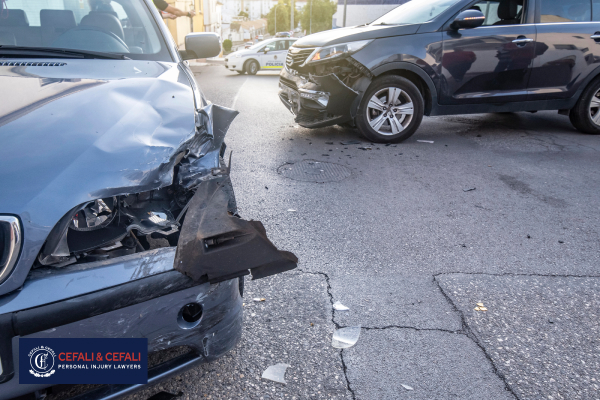
Courts and insurers use rules to decide who was careless. These rules apply in many types of car accident cases.
The rear vehicle is often blamed because the driver’s negligence usually involves not leaving enough space to stop safely. Courts determine fault in these situations by looking at police reports, skid marks, and witness statements.
A car accident lawyer can explain how the law applies to your case and help prove the other driver was at fault. Many auto accident attorneys also work with accident reconstruction experts to show what really happened. Getting legal assistance early can make a major difference in the outcome of your claim.
A turning car is often at fault when it cuts across vehicles involved going straight. Police officers and insurance adjusters usually find the turning driver at fault because traffic laws give the right-of-way to the straight-moving car.
A skilled car accident attorney can help you challenge liability if the facts of your case are unclear. In many situations, a car accident lawyer will gather all the evidence to build a strong case. Having auto accident attorneys on your side ensures you get proper legal assistance when fault is disputed.
Running a red light, ignoring a stop sign, or driving over the speed limit are clear signs of fault in an accident. These violations make it easier for police officers and courts to hold the at-fault driver legally responsible.
An experienced car accident attorney can use traffic citations and police reports as strong evidence in your favor. Working with a car accident lawyer also ensures that traffic laws are applied correctly to support your claim.
Some states use comparative negligence or modified comparative negligence, where blame can be split. In other places, if you share fault, you may lose the right to recover damages. A car accident attorney can explain how your state’s rules affect your ability to collect compensation.
A trusted car accident lawyer will also work to reduce any percentage of fault placed on you, helping protect the value of your claim.
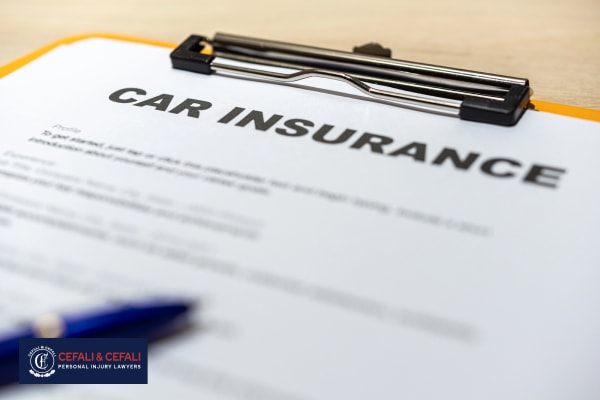
After a car accident, insurers play a huge role in deciding who is at fault. They look at records, medical reports, and proof to decide liability. Insurance companies also check the accident scene, vehicle damage, and any traffic citations to build their case.
In some states, personal injury protection (PIP) coverage may also affect how compensation is handled. They often rely on all the evidence presented by both parties to support their decision.
An insurance adjuster reviews the police report, photos, medical records, and talks to the other driver to determine fault. They may also examine witness statements and even hire accident reconstruction specialists for difficult cases. Insurance adjusters often compare the stories of both drivers involved to see where they match or conflict.
In some cases, auto accident attorneys can provide evidence that adjusters might overlook. Having professional legal assistance helps protect your rights and ensures the adjuster does not unfairly shift blame. This is especially important in claims involving personal injury protection benefits, where insurers may try to limit payouts unfairly.
If drivers disagree, insurance companies may fight over who pays. Sometimes, the courts determine final liability when insurance companies determine fault unfairly. These disputes can delay settlements and make it harder to pay for medical expenses or vehicle damage. A strong car accident lawyer can argue your side and prevent insurers from shifting liability.
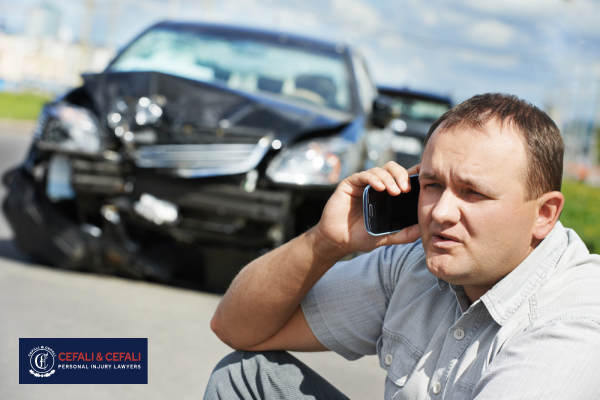
After an accident occurs, what you do next can greatly affect your claim. Acting quickly helps you gather evidence, follow the law, and protect your rights. These steps make sure you have the strongest proof possible.
Always call the police after a car accident, even if the crash seems small. A police report is a key piece of evidence that insurance companies rely on to determine fault. Police officers will document the accident scene, speak with drivers involved, and gather important details.
Filing a report also creates a record that your auto accident attorneys or legal team can review. The report may note traffic citations, road conditions, and drivers involved, which can be used later to dispute fault if needed.
If it is safe, gather as much information as possible at the accident scene. Take clear photos of vehicle damage, the road, traffic signs, and the exact location where the accident happened. Speak with the other driver politely but do not admit fault. Collect names, phone numbers, and insurance information from all parties involved, including witnesses.
Photos and statements can help your car accident attorney build a strong claim. By gathering evidence early, you give your legal team the tools they need to show who the at-fault driver really was.
After a car accident, always get medical help, even if you feel fine at first. Some injuries take hours or days to show symptoms, and delaying care can harm both your health and your claim. Keep all medical records and receipts for medical expenses, as they prove the cost of treatment.
A car accident attorney can use this documentation to show that the injuries you suffered were caused by the crash. Seeking prompt care also shows that you took reasonable steps to protect your health, which helps when courts determine liability and damages.
You should contact your insurance company as soon as possible after the accident occurs. Give them basic details like the accident scene, vehicle damage, and the other driver’s information. Avoid sharing guesses or saying too much about fault. The insurance adjuster may use your words against you.
By reporting quickly, you comply with your insurance coverage rules and protect your right to benefits, including PIP if it applies in your state. An auto accident attorney can step in if your insurer delays, disputes, or undervalues your claim.
Never tell the other driver or their insurer that you caused the crash. Even saying “I’m sorry” at the accident scene may be taken as if you admit fault. Remember, only the evidence presented, the police report, and sometimes the courts determine who the at-fault driver is. Leave those decisions to investigators and your lawyer.
By avoiding early blame, you prevent insurance companies from using your words to shift liability and weaken your claim. Always let your car accident attorney handle those conversations to protect your case.
Police write a police report, but they do not always decide fault. Insurers and courts often use their notes to help determine responsibility.
A car accident-based claim is handled by your insurance company, using reports, photos, and statements to decide liability and damages.
Bodily injury includes harm like cuts, broken bones, or head trauma. It also covers long-term conditions caused by the crash.
In no-fault states, drivers use their own insurance, including personal injury protection, to cover medical bills, no matter who caused the crash.
In an at-fault state, the driver who caused the crash must pay damages, usually through their insurance coverage.
Yes. If liability is not clear, a case may go to traffic court, where a judge can look at evidence and make a final decision.

If you were involved in a car accident, you should not face insurance companies or legal battles alone. Cefali & Cefali Personal Injury Lawyers provides the strong support you need to protect your rights. Our car accident lawyer and car accident attorney team has experience with difficult claims and understands how to build a strong case for our clients.
We know that injuries, medical bills, and vehicle damage can cause serious stress after a crash. That is why we focus on fighting for a fair outcome in every case. Our law firm helps gather evidence, review the police report, and present the proof needed to strengthen your claim.
Contact us today to schedule your free consultation. Our legal team will answer your questions, explain your options, and help you move forward. With us on your side, you can feel confident your case is in good hands.

Why Choose Cefali & Cefali Personal Injury Lawyers








"*" indicates required fields